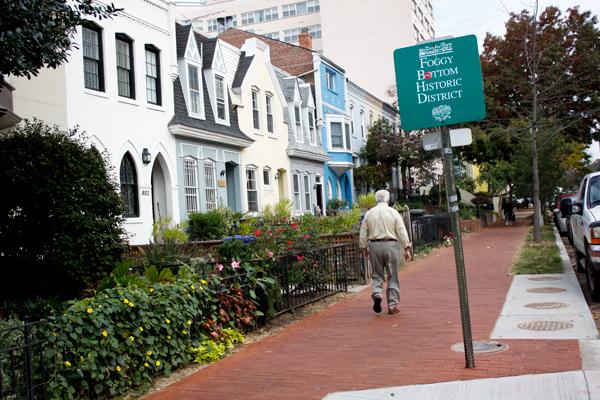Rising housing prices in Foggy Bottom may hinder students from finding affordable places to live off-campus over the next few years, experts say.
Home values in Foggy Bottom have increased 5.1 percent in the past year, which will likely force up rent prices. High demand paired with new developments in the area have caused home values to inflate more than 17 percent since 2009, according to data from the real estate website Zillow.
The median monthly rent price for Foggy Bottom is $2,233, which is just a few hundred dollars less than the median rent price for all of D.C.
More people want to live in Foggy Bottom because it’s part of the “urban core,” an area with a high density of people and nearby resources, said Robert Valero, the director of GW’s Center for Real Estate and Urban Analysis. That demand pushes up housing prices.
“A person would need to look into the overall cost,” Valero said. “You could potentially be paying more for an apartment here in Foggy but you can walk to class and walk to campus.”
After a 10-cent increase in July, an average Metro ride will cost $3. Riding the Circulator bus, which has routes that take passengers to Georgetown and other D.C. neighborhoods, costs $1 for each trip.
Valero added that apartments in Foggy Bottom are more expensive than in neighborhoods like Shaw, though rents are increasing city-wide because there is high demand to live within the city bounds.
John Young, a realtor with Re/Max Realty Services, said when housing prices rise, they affect the rental market for the neighborhood. Young, who sells property in D.C., said the increase in housing prices will hurt students looking to live off-campus because landlords are looking to make as much money in the housing market as possible, and they’ll have higher mortgages to pay off.
“It’s kind of a tug of war in a sense because students are always looking for affordable housing,” he said.
Christopher Leinberger, who chairs the Center for Real Estate and Urban Analysis, said Foggy Bottom is also in high demand because it is a pedestrian-friendly neighborhood with easy access to supermarkets and other businesses.
“The one thing we have a surplus of in this country is land, we just don’t have enough land that’s in a walkable urban location,” he said.
Some students will have to wait longer to search for off-campus housing. Last year, the University announced that starting with the Class of 2018, students will have to live on-campus through junior year. That change sparked criticism from students, who pointed out that GW housing was more expensive than off-campus options.
Living in The Dakota, a third and fourth-year residence hall, costs students $10,830 a year for a three-person unit, the cheapest on-campus housing option for students in those class years.
Across D.C., real estate is booming. Washington City Paper released a report in August showing the lowest and highest end are growing faster than the properties in the middle.
Patrick Kennedy, chairman of the Foggy Bottom and West End Advisory Neighborhood Commission, said GW’s developments, including the Milken Institute School of Public Health, have helped boost the neighborhood’s desirability.
“To the extent that GW’s landholding has increased, there’s pressure against supply, because there’s less land available for hotel and apartment developers. But GW is far from the only landowner contributing to that trend,” he said.
Kennedy added that as an alumnus with an entry-level job, he understands the struggle students face in looking to find off-campus housing in Foggy Bottom.
“Our salaries haven’t gone up, but housing costs most definitely have. It pinches me every month. I feel it in my paycheck,” Kennedy said.







